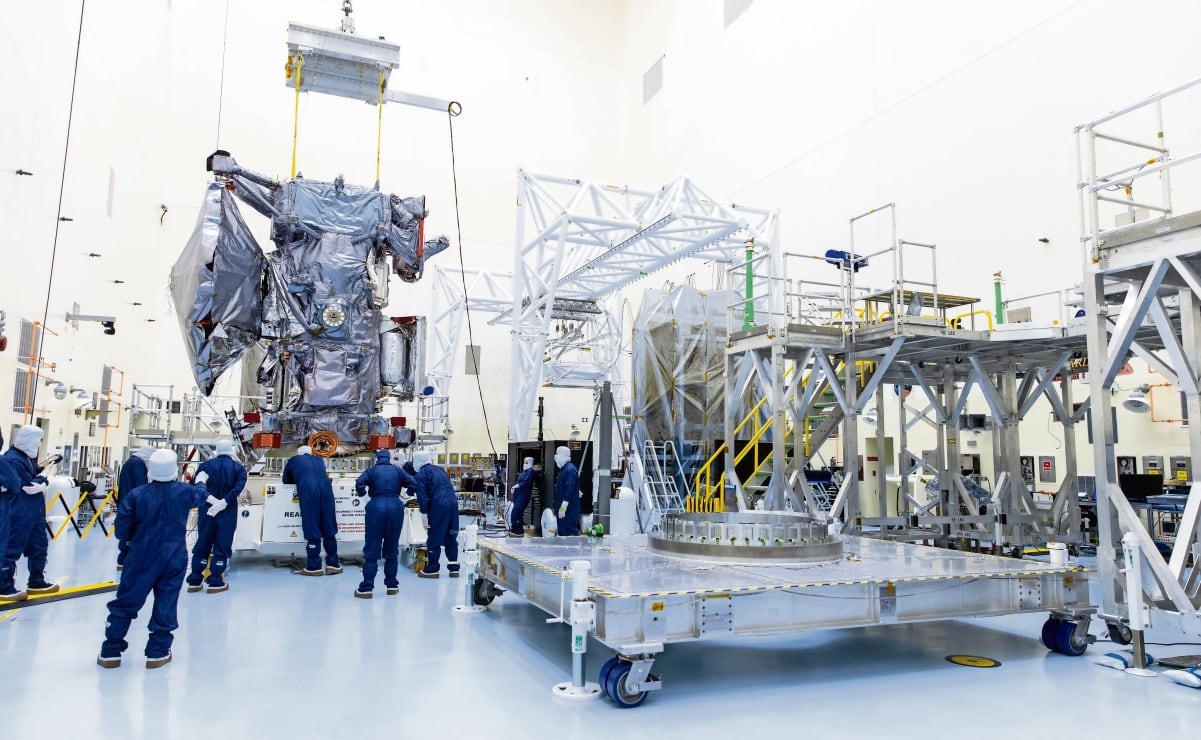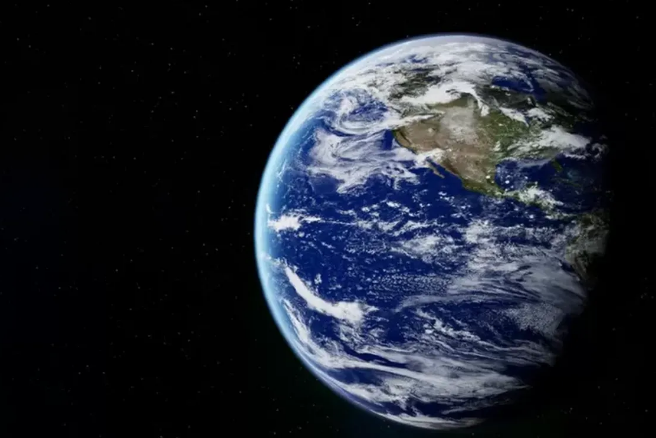Poet a decade ago Walt Whitman called the poem by Moon picture. One of his poems written at the end of the 19th century A collection of poems to the moon, a book published on the 50th anniversary of the man landing on the moon. Scientific knowledge is linked to poetry. The investigation of what happens beyond land borders challenges the human imagination.
Our planet's satellite has attracted attention for various reasons. A study led by scientists from Italy's University of Trento, recently published in the journal Nature Astronomy, announces a historic lunar discovery: a tunnel at the bottom of the moon that looks like an ancient, now empty crater. The existence of these natural caves has been theorized for over 50 years, but it has finally been confirmed. So, in addition to bunkers that are planned as possible future human habitats, these shelters designed by nature could also serve to protect life beneath the lunar surface.
It's not just our moon that continues to inspire hope for the study of life beyond Earth. Europa, Jupiter's icy moon, is considered one of the most promising places to find microbial life forms and habitable environments. The Europa Clipper mission is about to leave to explore the liquid water beneath its ice in the ocean. This project is historic in many ways. This is the launch of the biggest ship Pot developed for space travel; and contains some of the most advanced scientific instruments in contemporary space technology.
read more: Dialogue, opportunities for youth and non-discrimination against private universities: demands for a new science secretariat
Source: NASA
And poetry? You will actually travel on the journey. The “Message in a Bottle” project invited people around the world to add their names to a poem written by Mexican-American poet Ada Limon. “We are creatures of constant wonder, interested in beauty, leaf and flower, sorrow and pleasure, sun and shadow. And what unites us is not darkness or cold space, but the offering of water,” says the poem, which seeks to connect two aquatic worlds: Earth, looking into space to understand the mysteries of life. trying to , and Europe, waiting to be explored to the bottom of its liquid territory.
The Integrating Arts and Sciences program is a special collaboration between NASA, the United States Boat Laureate Program, and the United States Library of Congress. The poem will be inscribed on NASA's robotic spacecraft, while participants' names will be recorded on microchips and implanted in the spacecraft for its 2.9 billion kilometer journey to Jupiter.
The Europa Clipper mission is two months away from its final launch. The spacecraft's payload includes cameras and spectrometers to produce high-resolution images and detailed maps of the composition of the surface and thin atmosphere of Europa, one of Jupiter's 95 moons. One of these instruments is the Mapping Imaging Spectrometer for Europe (MISE).
This infrared spectrometer will map the composition and distribution of snow, salts, organic matter and other hot spots in Europe. The maps will help scientists understand the geological history of the moon, which was first discovered by Galileo Galilei four centuries ago. The Hubble Space Telescope and other observatories have already detected traces of the continuous ejection of water into space, evidence that it is still geologically active.
One of its main goals is to determine whether Europa's oceans are suitable for life. The ocean is between 60 and 150 kilometers deep and is estimated to hold twice as much water as Earth's oceans. The spacecraft will also carry an ice-penetrating radar to search for groundwater beyond the estimated 15- to 25-kilometer-thick ice covering Europa.
Snow-penetrating radar (REASON) transmits radio waves that bounce off subsurface snow features. Similar technology has been used on Earth for decades to study the thickness and subsurface structure of the Antarctic and Greenland ice sheets.
read more: A marine mammal contracts highly pathogenic avian influenza and becomes the first disease
A sophisticated magnetometer is responsible for carrying out gravity measurements. This icy satellite has the same gravity as Earth. Objects on Europa's moon are estimated to fall at a speed of 1,315 m/s². On Earth, humans experience a fall of 9.8 m/s². If an astronaut could travel to the Moon, his body would be roughly one-third heavier than Earth, which would allow him to move better than other places planned to take humans into space, such as the Moon. tuesday
Europa's gravity and its gravitational field flex as the moon's noncircular orbit moves toward and away from Jupiter. Measuring Europa's gravity at various points in its orbit will help us see how the satellite moves and reveal its internal structure. Also, the Europa Assessment and Exploration Radar (REAS) will study the land texture, composition, and roughness of the moon's surface.
The spacecraft will carry a thermal instrument to identify different locations of hot ice and water eruptions, and instruments to measure the composition of tiny particles in the moon's thin atmosphere and its space environment. A thermal imager uses infrared light to distinguish hot areas near the surface that may contain liquid water or that may have arisen during an eruption. This device can also measure the surface texture to understand the properties of each piece at a very small scale.
Trapped in Jupiter's magnetic field, Europa's ionosphere and plasma distort the magnetic fields. Plasma Instrumentation for Magnetic Probes (PIMS) can help distinguish these deformations. It will study the plasma density, temperature and flow. This is another key to accurately determining ice sheet thickness, ocean depth, and atmospheric conductivity.
Another very important function for work is chemical analysis. Gases in the atmosphere and possible plumes from its ocean will be analyzed to determine how the ocean and surface exchange material and how radiation on the Moon's surface changes compositions. The Surface Dust Analyzer (SUDA) will try to understand how small asteroids eject fragments toward Europa, which will also provide clues about the ocean's salinity.
When NASA's Europa Clipper probe orbits Jupiter, it will need a powerful antenna that will allow it to transmit all the collected science data and receive orders from Earth hundreds of millions of kilometers away. Technicians installed the spacecraft's high-gain antenna a month ago inside the Hazardous Cargo Facility at NASA's Kennedy Space Center in Florida.
read more: They have been awarding the National Science Prize for the past four years due to the absence of gonazid
To ensure Europa Clipper has the necessary bandwidth, NASA's deep space X-band radio frequencies of 7.2 and 8.4 (GHz), and Ka-band 32 (GHz), are large radio antennas that communicate with dozens of spacecraft across the solar system where the antenna operates via the agency's Deep Space Network. A three-meter-wide dish-shaped antenna and several smaller antennas will transmit data to Earth, lasting about 45 minutes as the spacecraft orbits Jupiter.
Thus, Europa Clipper will travel 2.6 billion kilometers to Jupiter. The spacecraft will make approximately 50 flybys of Europa, allowing its nine science instruments to collect data on the moon's atmosphere, its icy crust and the ocean below. As Europa Clipper passes through Europa's gravitational field nearly 50 times, the moon will be at various distances from Jupiter.
The Juno mission, which left Earth in 2011 and has been orbiting Jupiter since 2016, has collected revealing data on Europa's conditions. ESA's JUICE mission, which left Earth a year ago, is also trying to join the efforts, but Clipper is undoubtedly more ambitious to comprehensively identify this moon, full of the perfect balance of science and poetry in the human quest.


:format(jpeg):focal(491x333:501x323)/cloudfront-us-east-1.images.arcpublishing.com/gfrmedia/IQTCLIOJRFHLHGWSKVX24FH7JA.jpg)


:quality(70)/cloudfront-us-east-1.images.arcpublishing.com/lanacionpy/2FJAHKU2EBFSTGE2M6NSSILIDA.jpg)